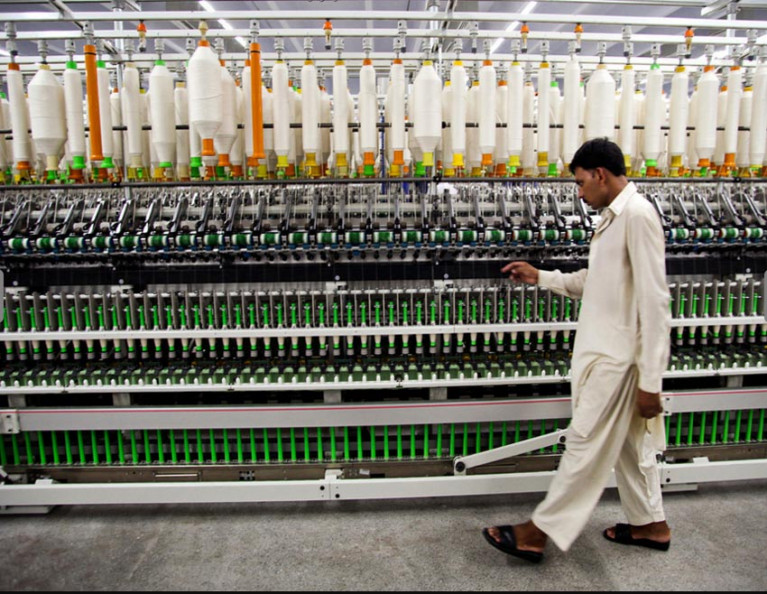The committee focused on improving spinning and ginning processes by adopting better technology, shifting the current weight-based pricing system to the one based on quality and cotton labeling by ginners to show quality features.
ISLAMABAD: The government has agreed to put a halt to cotton imports during crop harvest in an effort to ensure farmers get an attractive price and are encouraged to plant more in the next season as cotton production has dropped sharply over the past four years.
Earlier, on the persistent demand from textile millers, the current government allowed duty-free import of cotton, but that hurt the interest of Pakistan’s growers and benefitted Indian farmers who have been exporting a significant quantity of cotton in times of need.
Pakistani farmers have suffered as the government has focused more on framing industry-friendly policies over its tenure since June 2013.
According to a report submitted to the cabinet by a special committee, cotton production has faced virtual stagnation since 1991-92 fluctuating in the range of 10 to 12 million bales. In 2015-16, the output even dropped below 10 million bales, standing at 9.9 million.
Pakistan’s annual consumption needs are estimated at 15 million bales, turning the country into a net importer of cotton.
The committee, headed by Planning Commission Deputy Chairman Sartaj Aziz, was constituted by the cabinet in order to examine the challenges faced by the cotton farmers.
It recommended that cotton import should not be allowed during crop picking. It suggested that cotton seed supply industry should be regulated by rationalising over 700 such companies.
The seed act and plant breeders’ rights act may be implemented properly and extension services may be improved through promoting better crop husbandry and employing information technology-based solutions, it said.
The committee suggested that cotton cultivation may be expanded in Khyber-Pakhtunkhwa and Balochistan – the two provinces that have a very insignificant contribution to the overall cotton production.
It also focused on improving spinning and ginning processes by adopting better technology, shifting the current weight-based pricing system to the one based on quality and cotton labeling by ginners to show quality features.
The committee proposed that partnerships may be initiated for a variety of development and marketing activities and the capacity of National Biosafety Committee and the Federal Seed Certification and Registration Department should be built as regulators.
It also outlined different causes for the stagnant production which included the use of inappropriate first generation rather than fourth generation Bt technology, absence of better quality seeds, lack of solution to the cotton leaf curl virus, low-quality ginning process and heavy contamination in cotton.
Owing to these reasons, the income of farmers had gone down and plantation area shrank 20% between 2004 and 2016.
It recommended that the target for cotton production should be set at 25 million bales by 2025 by increasing the plantation area from 2.4 to 3.5 million hectares, up 45%, and the yield up to 1,200 kg per hectare.
It suggested that research funds may be provided for a restructured Pakistan Central Cotton Committee.
It proposed a Rs2.5-billion cotton research fund for a period of five years through competitive grants managed by the Pakistan Agricultural Research Council (Parc) under an inter-provincial committee.
The cabinet, in a meeting held in the first week of March, approved all the recommendations of the committee.
Πηγή: tribune.com.pk

